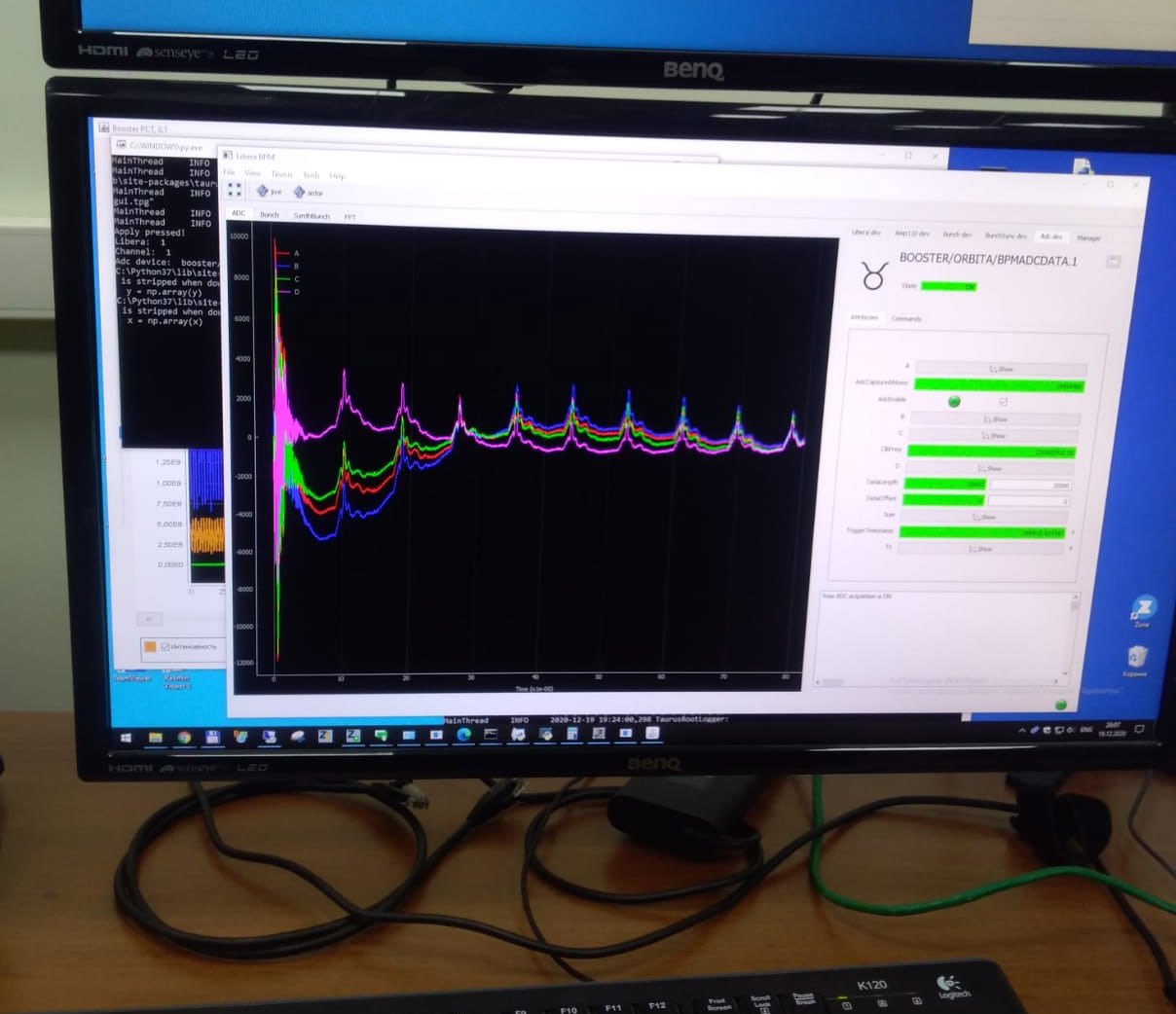Congratulations on the first beam in the NICA Booster
News, 22 December 2020
On 19 December 2020, a beam of single-charged helium ions was successfully injected into the new superconducting cyclic accelerator Booster of the NICA collider, and a stable circulation of the beam was obtained. On this significant occasion, leaders of the Joint Institute for Nuclear Research sent their congratulations to the team of the NICA project.
Dear colleagues, dear comrades!
With all the heart and on behalf of many of our colleagues, employees of the multinational Institute, we congratulate you on the first beam in the Booster!
This is a truly historic event for the entire Institute! We have been waiting for a launch of a new modern superconducting synchrotron for many decades, and this is not an exaggeration. Even during the design of the Nuclotron in the 80s, it was planned to construct a booster synchrotron. After the launch of the first superconducting synchrotron for relativistic nuclei, the Nuclotron at LHE, even in the most difficult 90s, and then in the no less difficult 2000s, the team of the Laboratory of High Energy Physics and the entire Institute did not stop dreaming and making plans for the construction of a new synchrotron booster. The project of this already operating newly constructed machine was also difficult and went through many hardships: different options for the structure/operating energy, magnetic system and even size and placement. As a result, it has happened and there is a contribution of everyone to this success. The new Booster has been produced by several talented and skilful generations of accelerator physicists and engineers, the best representatives of various national and international accelerator schools. It has been constructed in very close collaboration with our partners from INP SB RAS, INR RAS, ITEP, and IHEP NRC “Kurchatov Institute”, as well as many other Russian and foreign institutes. This is a truly magnificent event that has happened thanks to your talent, hard work, well-coordinated and very hard teamwork, and most importantly thanks to your faith in achieving the goal!
We sincerely congratulate all of you and your families who supported you over these years! We know exactly that the Institute and Dubna are very proud of you! Glory to the Accelerator Department, Glory to VBLHEP, Glory to JINR!
JINR Director RAS Academician Victor Matveev,
JINR First Vice-Director RAS Academician Grigory Trubnikov,
JINR Vice-Director of JINR for the NICA megascience project RAS Corresponding Member Vladimir Kekelidze
According to the press-release of the Laboratory of High Energy Physics:
On 20 November 2020, Prime Minister of the Russian Federation Mikhail Mishustin made a technological launch of one of the main units of the megascience project “NICA Complex” – a superconducting booster synchrotron – the Booster. This event was preceded by the successfully completed long and intense work of the VBLHEP Accelerator Department on the construction and commissioning of all objects of the injection complex of the project including sources of polarized, light and heavy ions and the heavy-ion linear accelerator, which is the basis for obtaining the required beams and their injection into the Booster. The Booster superconducting structural magnets were also produced, the built-in systems of the Booster ring were produced, assembled and tested: the high-frequency accelerating system, the electron cooling system of the circulating electron beam, and the beam injection and extraction devices. The Booster cycle setting equipment, diagnostic and thermometry equipment, power supply systems, transition detection and protection of the Booster magnetic and cryostat systems were produced.
The technological run began with cooling down the magnetic and cryostat system and a comprehensive inspection of the blocking and protection systems against the loss of superconductivity, tuning the magnetic field cycle and the accelerating system. In strict accordance with the schedule, on 19 December 2020, single-charged helium ions were injected into the Booster, and a stable circulation of the beam was obtained (see the photo of the monitor in the control room). The high quality of production and assembly of all elements of the Booster synchrotron magnetic system made it possible to work without using a correction system of the guiding magnetic field.
 Readings of non-contact electrostatic beam detector (peakup) with peaks from the beam passing at each turn
Readings of non-contact electrostatic beam detector (peakup) with peaks from the beam passing at each turn
The final step to the physical launch of the Booster will be the adjustment of the beam acceleration mode. The construction of the beam transportation systems from the Booster to the Nuclotron will be soon completed.
The striking achieved result is the completion of a longstanding stage of well-coordinated work of a team of several generations of accelerator physicists and engineers in cooperation with partners from INP SB RAS, INR RAS, ITEP, IHEP NRC “Kurchatov Institute”, and many other Russian and foreign organizations.